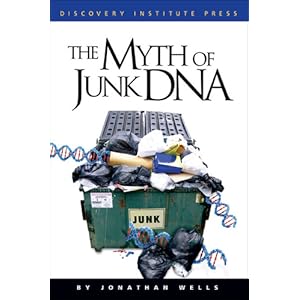 As David Klinghoffer puts it at ENV:
As David Klinghoffer puts it at ENV:
Over the weekend, Jonathan Wells’s The Myth of Junk DNA broke into the top five on Amazon’s list of books dealing with genetics — a list normally dominated at its pinnacle by various editions of Richard Dawkins’ The Selfish Gene. Not bad, Jonathan.The juxtaposition with Dawkins’ Selfish Gene is appropriate, notwithstanding the demurrals of biochemist Larry Moran et al. Dawkins and other Darwinists, such as Jerry Coyne, have indeed posited that neo-Darwinian theory predicts that swaths of the genome will turn out to be functionless junk. The Junk DNA argument has been a pillar of the Darwin Lobby’s efforts to seduce public opinion and influence public policy. Professor Moran wants to imagine that Dawkins never held that neo-Darwinism predicts junk DNA. But that’s not how other Darwinists see it. (Compare, for example, Dennett’s Darwin’s Dangerous Idea, page 316.)
So far, with none of them having actually read the book (though P.Z. Myers threatens to do so), the Darwin apologists’ response to The Myth of Junk DNA has followed along four lines of defense.
1) The usual insults. In his blog Larry Moran of the Department of Biochemistry at the University of Toronto, a grown man and from the looks of him not a young one either, repetitively derides Jonathan as an “IDiot.” (How embarrassing for this mature gentleman, you might think. Can you imagine Jonathan Wells or anyone else prominent in the ID community replying in kind, designating Professor Moran as “Larry Moron” or similar? The question is self-answering and tells you a lot about how desperation kindles anger among these people.)
– David Klinghoffer, “Junk DNA and the Darwinist Response so Far”ENV May 16, 2011 More.
UD News interview with Wells on his book, here.
Reb Moshe: PZ, What did you just say? You’re “thinking of picking up a copy of his book … well, hadn’t you better?” Or are you just a tourist around here? And haven’t we had this conversation already?